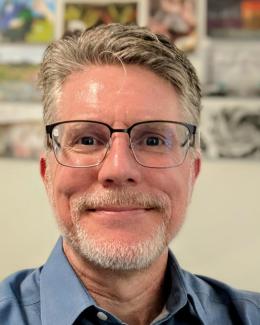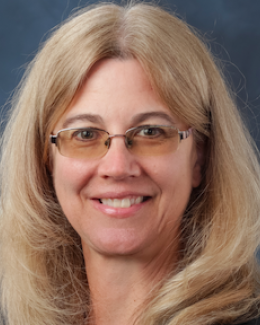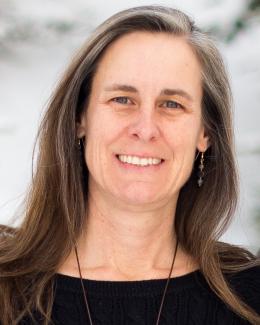
Later this month, a spring-loaded arm aboard the International Space Station will fling a small box touched by hundreds of Oak Ridge children into orbit around Earth.
It’s the culmination of nearly seven years of work and represents the ordinary and magical ecosystem of a community: the connections between parents, friends, family members, educators and many curious kids.
Oh, and NASA.
The Robertsville Middle School NASA CubeSat Launch Initiative project, dubbed RamSat for the school’s mascot, got its official start with the 2015-16 school year. But the seed had been planted at a Christmas church service in 2014, when RMS STEM teacher Todd Livesay ran into Patrick Hull, an old friend who was in Oak Ridge visiting family for the holidays. Hull, an Oak Ridge native who is now an aerospace engineer at Marshall Space Flight Center in Huntsville, Alabama, wanted to partner with Livesay on a STEM education project.
Nearly seven years after that first conversation, the school’s RamSat satellite, now onboard a SpaceX spacecraft, will launch at 1:29 p.m. June 3 from NASA’s Kennedy Space Center in Cape Canaveral, Florida, bound for the International Space Station. NASA TV and SpaceX will livestream the event. That trip will take about 24 hours and, two weeks later, RamSat will be deployed from the ISS into orbit 250 miles above the Earth. Traveling about 17,000 miles per hour, RamSat will make a complete orbit of Earth every 90 minutes.
RamSat’s mission is to take pictures of the forests around Gatlinburg, which were destroyed by wildfire in 2016. The mission is wholly designed and carried out by students, teachers and mentors, with support from numerous organizations, including Oak Ridge National Laboratory.

A new enrichment class
Just a few weeks after that meeting at church, then-principal Bruce Lay tasked Livesay with creating a new enrichment course for high-performing students to begin the following year. Remembering Hull’s invitation, Livesay traveled to Huntsville to discuss NASA’s cube satellite program.
CubeSats are small research satellites with standardized dimensions. RamSat is a two-unit CubeSat, with dimensions of 20 cm x 10 cm x 10 cm, that includes several component systems working together.
NASA’s CubeSat Launch Initiative provides opportunities for small satellites built by universities, schools and nonprofits to fly on upcoming launches. CubeSat offers students and teachers a low-cost pathway to conduct scientific investigations and technology demonstrations in space, while providing hands-on development experience.
“I thought the class would learn about CubeSats, how they work and get into space. We had some 3D printers, and we were making some pieces,” Livesay said. “But they finished everything we had prepared by Christmas. They were working on it outside of class – they were all in.”
The class took a trip to Huntsville to visit the flight center and present their work to Hull and a group of NASA engineers. A few days after the group returned to Oak Ridge, NASA administrators caught wind of the school’s field trip and asked Hull to encourage the middle schoolers to submit a proposal to design, build and launch a real satellite.
“I was not all about that — that’s truly rocket science,” Livesay said. “But Patrick persisted: ‘Come on, you’ve got ORNL, you’ve got Y-12. You’ve got people in Oak Ridge that know how to do this.’”
Gerry Palau, construction manager in ORNL Facilities and Operations and a parent-volunteer for the RMS Technology Student Association team, offered to put the word out at the lab that the Robertsville team was looking for help with their proposal. In 2017, Palau approached several researchers including Peter Thornton, an ORNL scientist focused on earth system modeling to understand climate change, who had been sponsored by NASA to do satellite remote sensing projects during his PhD and postdoc work.
“The technical challenges of doing anything in space, no matter how small the satellite, are huge,” Thornton said. “I knew what a NASA proposal needed to look like to be successful. First, I wanted to meet the students and the teacher; it spun up from there and we began to build a team.”

An out-of-this-world team
Over time, there has been an average of about 10 technical mentors involved in the project, including those from ORNL, the Y-12 National Security Complex, the Oak Ridge ham radio community and the Oak Ridge field office of the National Oceanic and Atmospheric Administration. Each mentor represents a different skill set needed for the project, such as satellite mechanics, flight computer programming, ground station software development, radio communications, camera equipment and optics capabilities.
“This project required a depth of technical expertise that a typical school isn't going to have. And, the lab is right here, full of this expertise,” Thornton said. “It’s a natural collaboration: there's so much potential for ORNL’s wealth of technical knowledge to be applied to teaching the next generation of scientists.”
Additional ORNL participation came from Ian Goethert, Michele Thornton, Melissa Dumas, Ralph Dinwiddie, Katie Corcoran, Nathan Phillip and Humaira Taz. Helping with merit reviews prior to proposal submission were Suresh Vannan, Vladimir Protopopescu, Jagjit Nanda and Andrew Harter.
Robertsville's proposal for RamSat was accepted — the first CubeSat proposal selected from a middle school — with an educational co-mission to develop a middle school STEM curriculum focused on CubeSat.
Dumas, an ORNL computer scientist who uses models to study how human activity influences climate, joined the project in its second year after hearing about it from her sister, Holly Cross, who is supervisor of career readiness and communications for Oak Ridge Schools.
“I was fascinated by the idea of our community having its own relationship to the space program,” she said.
Goethert, a data engineer who specializes in health information, joined ORNL in 2018. His involvement with RamSat predated his ORNL career. Like many parents working at ORNL, both of Goethert’s children went through Livesay’s STEM program at RMS.
“Todd is an outstanding teacher,” Goethert said. “My oldest, who just graduated from East Tennessee State University in interior architecture, attributes her passion for CAD [computer-assisted design] to his STEM class. When my son came through the program in 2017, I volunteered to help in any way that I could. It’s an honor to give what I can back to the community.”
In March 2018, ORNL Director Thomas Zacharia visited the school to present a $15,000 UT-Battelle donation toward building RamSat. The lab’s Energy and Environmental Sciences Directorate also provided community engagement funds toward the project.
“That was a big chunk of what we needed to get started,” Thornton said.
Dumas sees the pairing of ORNL and community schools as strengthening a natural continuum.
“ORNL symbolizes innovation for and investment in the future. Many of these students are planning to make scientific discovery a lifelong pursuit. They may one day help guide the science of the future,” Dumas said.
In addition to NASA and ORNL, RamSat is supported by donations from Oak Ridge Schools, Oak Ridge Public Schools Education Foundation, Comcast, UCOR, CNS-Y-12, Pumpkin Space, Robertsville Middle School, Protomet and Global Testing Labs.
Laurel Hetrick, a 16-year-old rising junior at Oak Ridge High School and daughter of ORNL’s Shelaine Curd, was in eighth grade when she was in Livesay’s class. She made presentations to several of these science-minded businesses and institutions.
“It’s not something you think about when you hear ‘NASA satellite,’ but I learned a lot of communication skills,” she said. “I spent a lot of time like talking to people in STEM fields, asking for grants.”
The first groups of RamSat students are finishing their first year of college or are about to start college, including Aidan Hilliard who graduated from Oak Ridge High School last week. He said the RamSat project sparked an interest and he’s going on to the University of Tennessee to study aerospace engineering. He said presentation skills were also a big takeaway for him.
“We had to present to a board of NASA engineers, basically presenting their own research back to them. We went all over Oak Ridge — to the lab, to the Rotary Club — asking for funding,” he said. “I used those skills throughout high school and have become much better at public speaking.”

Creating a lasting curriculum
Over the years, Livesay and the mentors have built a curriculum that brings each new class up to speed as a cohort with older students as mentors. First, students learn what the space environment is like for an object, such as what stresses it is under and what temperatures it’s experiencing. They learn the basics of orbital dynamics, which introduces advanced mathematical concepts. The next part of the course is focused on understanding the mission through the systems needed to take pictures of a forest from space and send them to the classroom.
“We walk through this as an engineering problem and have them fill in the details,” Thornton said. “We give them the experience of a real engineer, solving a problem under the constraints of time, budget and materials.”
Each cohort learns how the components work together, but each year focuses on a different phase of the mission from design through construction to software programming and systems testing.
“Despite the complex subjects involved, these mentors have translated the content in a way that is accessible to students,” Cross said. “These students have presented to panels of specialists, received feedback for continuous improvement on their models and were able to implement their learning immediately for a more successful product.”
The most recent classes have had the privilege of seeing it all come together; the next class of students is going to have a very different experience. In a couple of weeks, the real mission will begin: RamSat will deploy its antennas, power on and send a message back to the classroom declaring, “I’m here.”
Students will operate the mission using amateur radio frequencies to listen for RamSat as it passes overhead, sending commands to control the spacecraft, and gathering image data and information about the health of all systems onboard.
RamSat’s solar panels provide power to charge a lithium-ion battery, which in turn powers a flight computer, cameras, navigational components and a UHF/VHF radio for 2-way communication.
The team can only communicate with RamSat when it crosses the horizon over Oak Ridge, a span of 5-7 minutes. They’ll get an assist from Air Force radar installations, which track everything in orbit around Earth, to predict when RamSat will appear overhead and be ready to accept commands.
The mission will last for up to 18 months, after which RamSat’s orbit will have decayed due to drag from the atmosphere, ending with a fiery re-entry and vaporization of the satellite.

Schooling the students — and the scientists
“The construction of a CubeSat requires knowledge and use of a wide variety of scientific disciplines,” said Dumas. “I was drawn in by the realization that students who had the opportunity to participate in the project would experience first-hand the value of that education.”
Thornton said these students have experienced what a real career in a STEM field is like: “You can’t get that from a textbook or a video.”
“There’s an infinite amount of technical depth they could get into with this. All of us — including the technical mentors — will get to a point where it’s over our head. Nobody has all the technical skills that it takes to understand the whole thing and to do it on their own,” he said. “To me, that's an important lesson that the students are getting. It takes a team to accomplish something this complex. Your teammates have your back.”
During the pandemic, the RamSat team got permission to meet in small groups in the evenings, wearing masks and social distancing, over the summer and into the fall to keep the project on track. The project has been so meaningful to past students, that Hilliard and other RMS RamSat alumni came back to the school to help.
“My friend Tyler [Dunham] and I created the Gatlinburg fire mission,” Hilliard said. “It’s been awesome to see our mission selected and to see it launch. It’s nerve-wracking, but I’m relieved that it’s come this far.”
At times, the breadth of science required by RamSat was challenging even to the career scientists and they, too, relied on each other to get through the stickiest bits.
“This is the first time many of the technical mentors have ever tried to do something like this from end to end. It's fun and exciting, and everything about it has been a learning experience,” Thornton said. “That’s what I love – I love to dig in and learn something new and see how far it can go. Just like the students, the mentors, teachers and school administrators are all learning together.”
For Goethert, the project has allowed him to stretch his software development beyond what he does at the lab. Dumas agreed that RamSat took her into science areas she had not explored before.
“As an engineer, I was familiar with the basics of the math required for attitude determination and control of the spacecraft, but to make the system work within RamSat required much more study,” she said. “Working with the other mentors and the students greatly broadened my knowledge of the whole complement of sciences required to make this a successful mission. Most importantly, I’ve made some very good friends.”

The mission begins
In early March 2021, Thornton drove to Houston, Texas, to deliver RamSat to NASA for loading onto the spacecraft bound for the ISS.
“I was a little sad to put the lid on it and turn it over,” Thornton said. “But we’re all looking forward to the mission, which will be a lot of fun.”
On Thursday, he’ll be in Florida with his wife and fellow ORNL scientist, Michele Thornton, and their daughter, Claire, who also was once a student in Livesay’s class. They’ll gather with a group of a few dozen mentors, parents, teachers and students to watch the rocket shoot into the sky with RamSat aboard.
Come August, Thornton and his fellow mentors will show up again at Robertsville Middle to teach the next cohort. Livesay said he is still in disbelief when he looks back and thinks about the people who’ve worked on RamSat in the last seven years.
“Everything about this thing was super complicated, but people kept showing up. It’s unbelievable. The people that we needed, showed up when we needed them. It’s been like that the whole way.”
UT-Battelle manages ORNL for the Department of Energy’s Office of Science, the single largest supporter of basic research in the physical sciences in the United States. The Office of Science is working to address some of the most pressing challenges of our time. For more information, please visit energy.gov/science.






